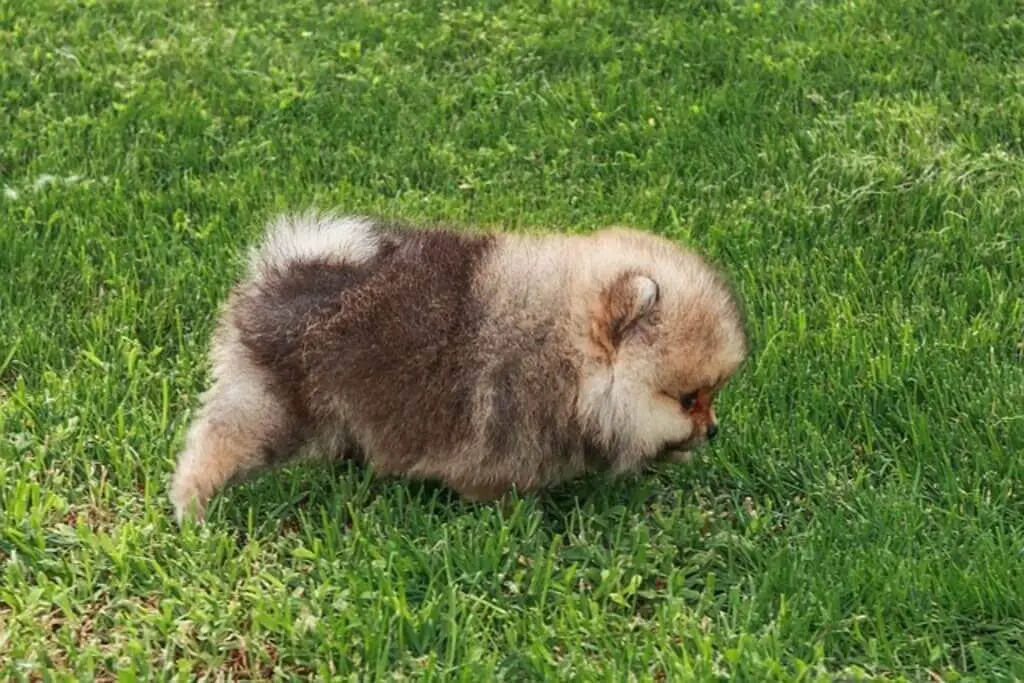If you’re wondering How to Housebreak a Puppy Without Using a Crate, you’re not alone. Your adorable little furball just had an “accident” on your favorite rug, and you’re asking yourself if there’s life beyond the crate. Trust me, I’ve been there. My neighbor once told me crate training was the only way to go, but honestly, watching my pup’s sad little face through those bars made me feel like a monster. Good news: you absolutely can housebreak your puppy without turning your home into a doggy prison.
Let’s be real here, crate-free potty training isn’t necessarily easier, but it’s totally doable with the right approach. I learned this the hard way when my golden retriever, Max, turned into Houdini and kept escaping his crate anyway. Sometimes life forces you to get creative, right?
Understanding Your Puppy’s Natural Instincts
Here’s the thing about puppies: they’re basically tiny, furry toddlers with zero bladder control. Young puppies can only hold their bladder for about one hour per month of age, which means your 8-week-old bundle of joy needs to go outside roughly every two hours. Fun times ahead!
Puppies naturally want to keep their sleeping and eating areas clean. This instinct is what makes crate training effective, but you can absolutely work with this behavior without confining them. The key is creating designated spaces and establishing clear boundaries throughout your home.
Ever notice how your pup sniffs around in circles before doing their business? That’s your golden opportunity right there. Learning to recognize these pre-potty signals is like having a crystal ball, except instead of predicting the future, you’re preventing carpet disasters.
Setting Up Your Crate-Free Training Environment
Without a crate, your entire strategy revolves around supervision, confinement to puppy-safe areas, and consistency. Think of it as creating invisible boundaries rather than physical ones.
Designate a Safe Zone
Pick one room in your house, preferably one with easy-to-clean floors (trust me on this one). This becomes your puppy’s headquarters when you can’t watch them like a hawk. I used my kitchen because, let’s face it, accidents on tile are way better than accidents on carpet.
Remove anything valuable or chewable from this space. Puppies have a supernatural ability to find the one thing you forgot to move. Set up their food, water, bed, and toys in this area. The goal is making this space feel like home, not punishment.
Create Multiple Potty Stations
Since you’re not using a crate, establishing several outdoor potty spots becomes crucial. Pick specific areas in your yard and always take your pup to the same spots. Consistency is your best friend here, puppies learn through repetition, and their little brains need clear patterns to follow.
The Supervision Strategy That Actually Works
Without a crate, you become your puppy’s personal bodyguard. Sounds exhausting? It kind of is, but only for the first few weeks. Here’s how to make it manageable:
The Two-Hour Rule
Set a timer for every two hours during the day. When it goes off, immediately take your puppy outside, regardless of what they’re doing. Sleeping, playing, eating, doesn’t matter. This creates a routine that works with their natural bladder limitations.
I’ll admit, setting timers felt ridiculous at first, but after cleaning up accident number fifteen, I became a timer evangelist. Your phone’s alarm function will become your new best friend.
Watch for the Warning Signs
Puppies aren’t subtle when they need to go. Sniffing, circling, whining, or heading toward the door are all red flags that mean “outside, NOW!” The trick is catching these signals before they turn into puddles.
Some puppies are more obvious than others. Max used to do this dramatic pacing routine, while my friend’s corgi would just stare at the door like she was trying to open it with mind powers.
Positive Reinforcement Without the Confinement
This is where the magic happens. Reward-based training works incredibly well when you’re not relying on crate confinement, but you need to be strategic about it.
The Treat Jackpot System
When your puppy goes potty outside, don’t just give them one treat, throw them a party! Use high-value treats (think tiny pieces of chicken or cheese) and give them three or four pieces immediately after they finish. Timing is everything here, the reward needs to happen within seconds of the behavior.
I used to carry treats in my pocket constantly during those first few weeks. My friends thought I was weird, but hey, it worked. Max learned that outside potty time meant good things happened.
Verbal Praise That Counts
Don’t underestimate the power of enthusiastic verbal praise. Use a specific phrase like “good potty!” every single time they go outside. Keep it consistent, puppies learn faster when the same words mean the same things.
Yes, you’ll feel silly talking to your dog in a high-pitched voice in your backyard at 6 AM. Your neighbors might give you weird looks. Do it anyway, it works.
Managing Accidents Like a Pro
Let’s get real: accidents will happen. Even the most dedicated supervision can’t prevent every mistake, especially in the beginning. How you handle accidents determines your long-term success.
The Clean-Up Protocol
Never punish accidents, seriously, never. Yelling or rubbing their nose in it just teaches your puppy to hide their mistakes, not prevent them. Instead, clean thoroughly with an enzyme-based cleaner that completely eliminates odors. Regular household cleaners won’t cut it.
If you catch them in the act, interrupt with a firm “no” and immediately take them outside. If they finish outside, reward them normally. This teaches them the right location without creating fear.
Learning from Mistakes
Every accident is data. Keep a simple log of when and where accidents happen. You’ll probably notice patterns, maybe your pup always has accidents after meals or when visitors come over. Use this information to adjust your supervision schedule.
Alternative Confinement Methods
Who says confinement has to mean a crate? There are plenty of humane alternatives that give your puppy freedom while keeping your home safe.
Exercise Pens and Baby Gates
Exercise pens create a larger confined area without the claustrophobic feel of a crate. Set up the pen in your designated safe room with all their essentials. It’s like giving them their own studio apartment instead of a jail cell.
Baby gates work wonders for keeping puppies in appropriate areas while still allowing them to see what’s happening in the house. Position gates strategically to create puppy-safe zones throughout your home.
Tethering Technique
When you’re home but can’t provide constant supervision, tether your puppy to you with a 6-foot leash. This keeps them close enough that you’ll notice immediately when they need to go out, but gives them freedom to move around.
I used this method while working from home, and it was actually pretty cute having my little shadow following me everywhere. Plus, it forced me to take regular breaks, win-win!
The Schedule That Sets You Up for Success
Consistency beats perfection every time. Create a daily routine that works with your puppy’s natural needs and your lifestyle.
Morning Routine
First thing in the morning, take your puppy straight outside, no breakfast, no coffee, no checking your phone. Their bladder has been holding it all night, and they need immediate relief. After they go potty, then you can start your normal morning routine.
Meal-Based Timing
Take your puppy outside 15-30 minutes after every meal. Eating stimulates their digestive system, making this a highly predictable potty time. Set that timer again, you’ll thank me later.
Pre-Bedtime Protocol
The last potty break of the day is crucial. Take them out right before bed, even if they don’t seem interested. A successful night starts with an empty bladder.
Troubleshooting Common Challenges
Let’s talk about when things don’t go according to plan, because they won’t, at least not always.
The Stubborn Puppy
Some puppies seem determined to test your patience. If your pup refuses to go potty outside, try changing locations or adding movement. Walk around the yard, try different surfaces (grass vs. concrete), or visit a new area entirely.
Sometimes puppies get distracted by all the exciting outdoor smells and forget why they’re there. Stay patient and give them time to remember their mission.
Regression Periods
Just when you think you’ve got this whole thing figured out, your puppy might start having accidents again. This is completely normal and usually happens around 4-6 months of age. Don’t panic, just go back to closer supervision for a week or two.
Multiple Dog Households
If you have other dogs, use them as teachers. Puppies learn incredibly well from watching older dogs. Take your puppy outside with your trained dogs, and let peer pressure do some of the work for you.
Advanced Tips for Faster Results
Want to speed up the process? Here are some game-changing strategies that most people don’t think about:
Weather-Proof Your Training
Rain, snow, or extreme heat can derail outdoor potty training. Teach your puppy to use different surfaces early on, concrete, gravel, mulch, grass. This prevents weather from becoming an excuse for indoor accidents.
Create covered outdoor areas if possible, or invest in a good puppy raincoat. Yes, they make those, and yes, your puppy will look adorable while staying dry.
The Power of Routine Words
Choose specific words for potty time and use them religiously. “Go potty,” “do your business,” or whatever phrase feels natural to you. Eventually, these words will trigger the behavior, which is incredibly helpful for travel or new environments.
When to Seek Professional Help
Sometimes, despite your best efforts, professional guidance becomes necessary. If your puppy is over six months old and still having frequent accidents, or if you notice any signs of urinary tract infections, consult your veterinarian.
Professional dog trainers can also provide personalized strategies for particularly challenging cases. There’s no shame in getting help, we all need backup sometimes.
Wrapping It All Up
Housebreaking a puppy without a crate requires more hands-on involvement, but it’s absolutely achievable with patience and consistency. The key ingredients are constant supervision, regular outdoor trips, immediate rewards for success, and proper cleanup of accidents.
Remember, every puppy learns at their own pace. Some get it in a few weeks, others take several months. Your job is staying consistent with your training approach, not comparing your pup to others.
The best part about crate-free training? You’re building a relationship based on trust and communication rather than confinement. Your puppy learns to communicate their needs to you, and you learn to read their signals. It’s pretty amazing when it all clicks together.
So grab those treats, set those timers, and prepare for some intensive weeks ahead. Before you know it, you’ll have a well-trained dog who knows exactly where the bathroom is, and it’s not your living room carpet. 🙂


